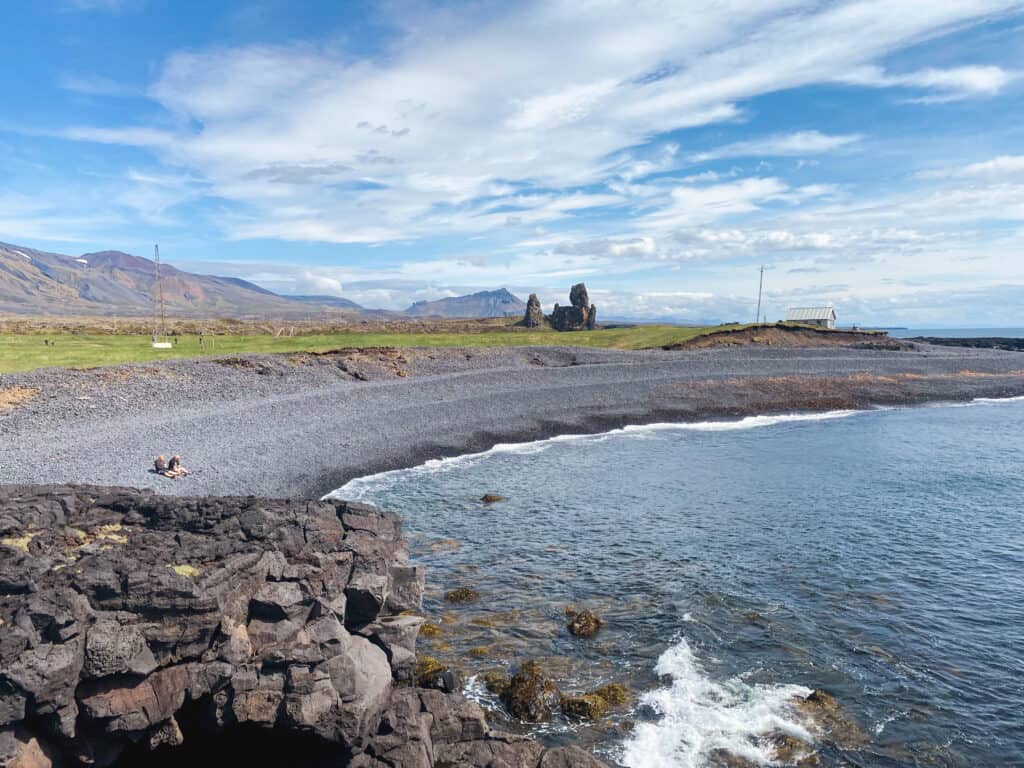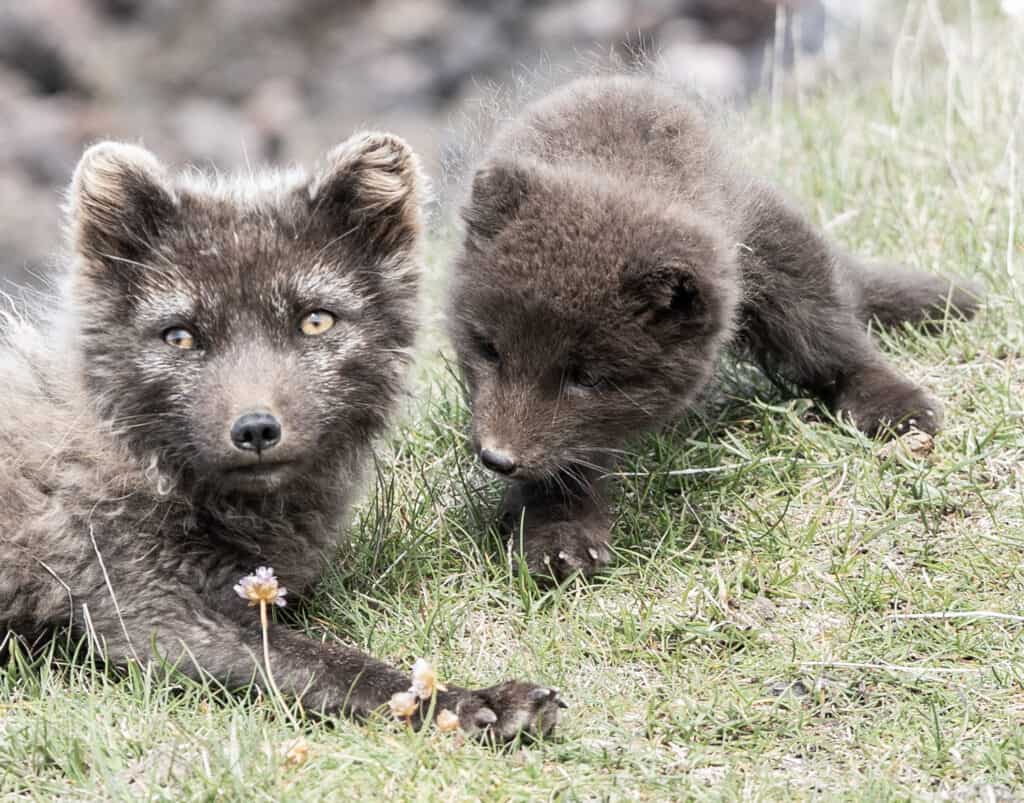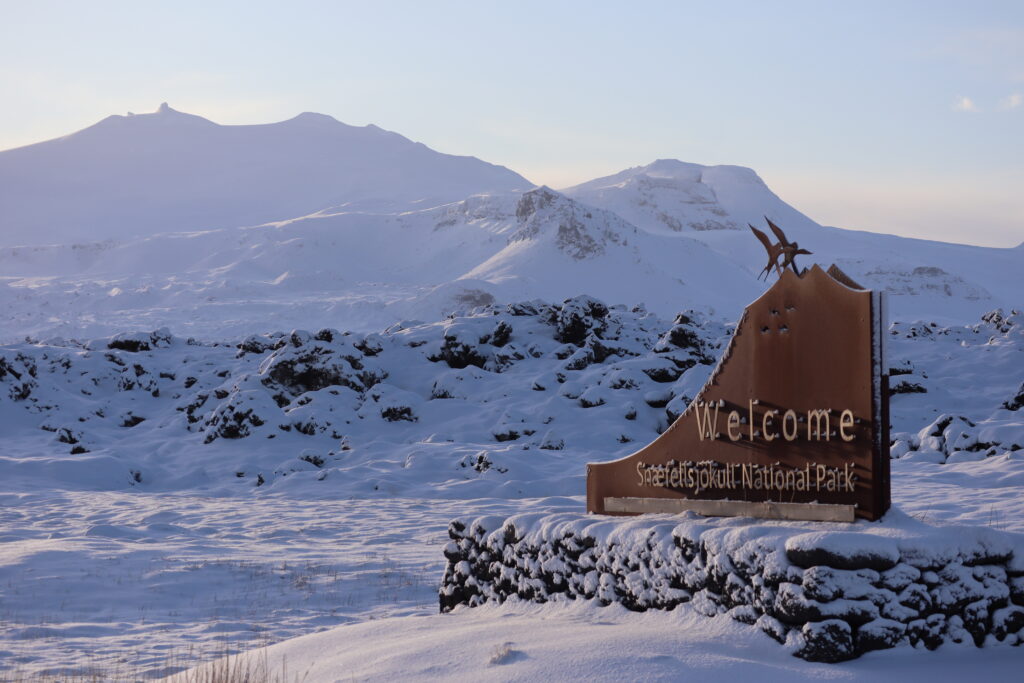About the national park
Snæfellsjökull National Park was established on 28 June, 2001. It contains unique nature and remarkable historical relics.
The national park is 183 km2 in size and covers a diverse landscape ranging from mountain to beach. The land is shaped by volcanic activity, glacial and marine erosion. There are various interesting landscape phenomena within the park such as craters, lava fields, caves, coastal cliffs, and sandy beaches in both light and dark colours.

Snæfellsjökull National Park has diverse geology, flora, and fauna. During the nesting season, the most common seabird species can be spotted at the coast. If you are lucky, you can spot whales and seals off the coast. Inland, passerine birds and grassland birds are common. The arctic tern is a characteristic of the area, and some of its largest nesting grounds in Iceland are in the vicinity of the park. Foxes are regularly seen roaming around the park, and occasionally pose for photos. Flora is characterised by hardy vegetation that grows in open areas, as well as more delicate vegetation found in sheltered areas. If you look carefully, you can find a number of species of ferns that grow in lava crevices.

Snæfellsjökull glacier is an active stratovolcano, and is considered the central volcano of the area. On the slopes of the mountain and around it, you can see many traces of volcanic eruptions and volcanic activity. Among other things, you can see rough, jagged aa lava and smooth pahoehoe lava, tuff, pumice, and light liparite formations.The landscape within the national park is shaped by human utilisation. There’s history at every step, which spans the period from the settlement to the present day. You can find old booth walls, docking sheds, farms, and fish drying sheds all around the park. Place names have an allusion to land-use, as well as to old stories such as Bárðarsaga Snæfellsás.
Here you can read an advertisement about the protection of Snæfellsjökull National Park.
